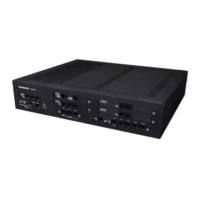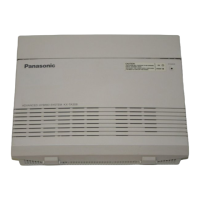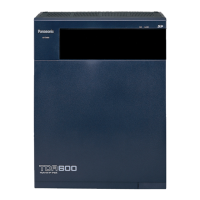[P2P Groups]
• Telephones must belong to the same P2P group to establish a P2P connection. Telephones at different
sites can be assigned to the same P2P group.
• Calls between IP extensions in different P2P groups are established via the DSP card in "DSP-through
mode". DSP-through mode is where only 1 DSP resource is required, regardless of the codec being used.
If a call is made between sites in a One-look network, 1 DSP resource is required at each PBX.
(® 5.5.4 DSP Resource Usage)
• Each PBX in a One-look network is also assigned to a P2P group. This assignment is used when a non-IP
telephone (e.g., an SLT) is on a call with an IP telephone at another branch. If the PBX and the IP telephone
both belong to the same P2P group, the connection is established from the PBX to the IP telephone directly.
• Calls between extensions in different P2P groups will consume DSP resources, even if both extensions
belong to the same PBX (site).
Installation Manual References
4.3.3 DSP S Card (KX-NS0110), DSP M Card (KX-NS0111), DSP L Card (KX-NS0112)
PC Programming Manual References
9.15 PBX Configuration—[1-1] Configuration—Slot—V-IPEXT32—Port Property—Option— IP Codec Priority
9.21 PBX Configuration—[1-1] Configuration—Slot—V-UTEXT32—Port Property—Option— UT Codec
Priority - 1st—UT Codec Priority - 4th
Feature Guide References
5.2.1 IP Proprietary Telephone (IP-PT)
5.1.2 Group
Feature Guide 453
5.2.3 Peer-to-Peer (P2P) Connection

